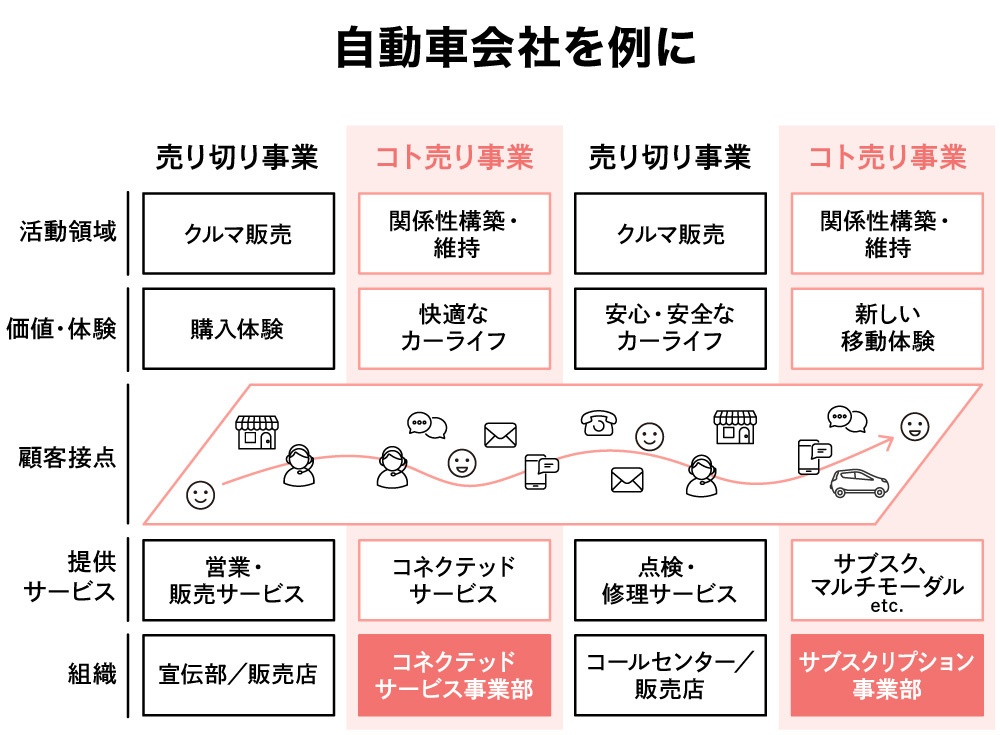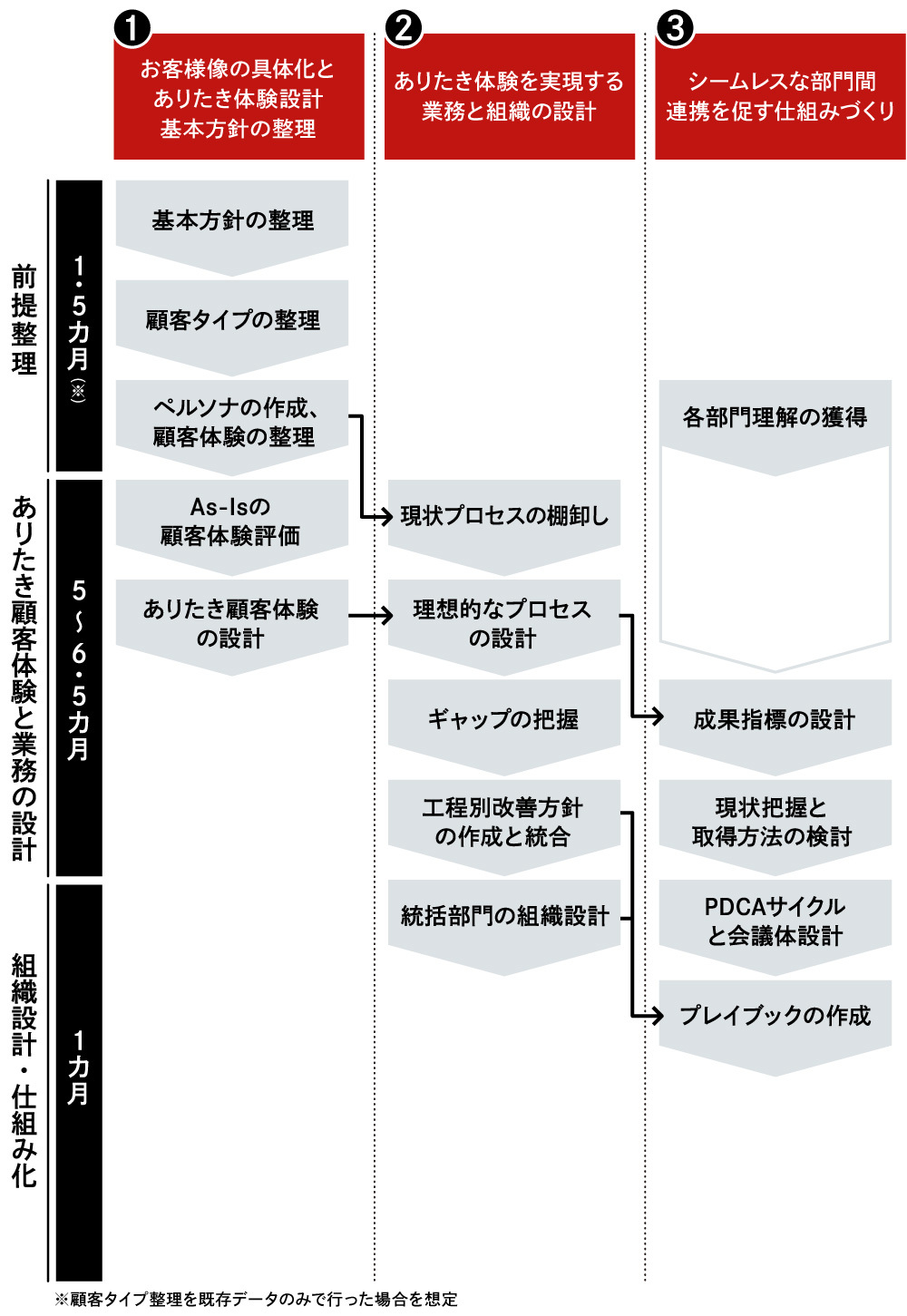Note: This website was automatically translated, so some terms or nuances may not be completely accurate.
To the Shin Publicity Department. The Trend Toward Transformation into a "Marketing Organization"
Today, DX is advancing across various industries, leading to increased service delivery through more customer touchpoints than ever before.
In this era, companies often fall into the trap of "siloed" business units.
How can companies integrate and optimize activities company-wide, preventing marketing efforts from becoming fragmented across each customer touchpoint?
In this article, Takashi Uozumi of Dentsu Consulting Inc., who has supported organizational restructuring for numerous companies, discusses integrating marketing functions primarily through "transforming the advertising department."
*In this article, "advertising department" refers broadly to departments handling advertising, promotions, public relations, investor relations, and other public relations functions.
<Table of Contents>
▼Increasing Customer Touchpoints Accelerates Business Unit Silos
▼Four Patterns of Advertising Department Restructuring
▼Three Steps to Support Transformation into the New Advertising Department
▼Integrate Customer Touchpoints: Start Small and Grow Big!
The more customer touchpoints increase, the more siloed business units become
Right now, the restructuring of advertising departments within companies, especially large corporations, is accelerating.
This is driven by the diversification of digital customer touchpoints, leading to a growing number of departments/organizations within companies that
"departments and organizations holding customer touchpoints"
are proliferating.
Business models themselves are also increasingly coexisting within companies: the traditional "product-centric" model and the "experience-centric" model that has grown in the DX era.
Because each business unit has its own organization managing customer touchpoints and their management, this leads to the "siloing" of business and customer data.

Take an automobile manufacturer as an example.
Today, the value provided by automakers extends far beyond "manufacturing and selling cars" or "attracting customers for vehicle inspections."
Connected cars are now commonplace, and manufacturers provide digital services through various customer touchpoints even while customers are driving.
However, at many automakers, each service is operated by a separate department or organization.
In other words, even though the customer is one person, there is no organization within the automaker that manages the various services provided to that customer in an integrated manner.

Historically, within companies, the function that played the most critical role in engaging with customers (including non-customers, i.e., consumers) was likely the "Advertising Department."
However, we are now increasingly hearing the following sentiment from corporate executives:
- "As our service offerings diversify, we need to establish KPIs (strategies) shared across all business divisions."
- "We want to integrate the DX initiatives being pursued by each business unit around customer data and create synergies."
- "Given this, is it acceptable for the Advertising Department's functions to remain unchanged?"
In other words,
"Many businesses are shifting toward diverse services and diverse customer touchpoints."
"Business units proliferating at each customer touchpoint hold data in silos."
This transformation—solving the challenges of the digital era (the experience-driven sales era) through "reorganizing the advertising department"—is becoming necessary for many companies.
Four Patterns of Advertising Department Restructuring
Recent advertising department reorganizations primarily fall into the following four patterns:
Pattern 1: Integration of the Advertising Department and Customer Support Organization
In many companies, the advertising department and customer support organization are separate entities. Often, they even have different executive officers overseeing them, leading to differing organizational goals.
At one mail-order company, the advertising department's activities, driven by the KPI of "short-term new customer acquisition," created overly inflated customer expectations. This led to a situation where, shortly after customers were transferred to customer support, a large number of cancellations occurred within a very short period. The company failed to meet the excessively high customer expectations it had created.
Consequently, this company added a new KPI: "The advertising department and its responsible executive retain responsibility for maintaining contracts for one year after customer acquisition."
In essence, they integrated part of the customer support function into the advertising department. This naturally led to a decrease in the cancellation rate. The gap between expectations and satisfaction was resolved.
Additionally, an electronics manufacturer integrated its advertising department with its customer support organization. They shifted their brand management focus from "acquiring new customers" to "cultivating fans and implementing lifetime value marketing," achieving significant results.
Pattern 2: Integrated Customer Touchpoint Management
This pattern describes a situation where customer touchpoints proliferated to the point where integrated management became essential.
One electronics manufacturer established a CCXO (Chief Customer Experience Officer) as a headquarters function when implementing a unified OneID system for digital members, e-commerce, and in-store touchpoints. This consolidated the previously fragmented operational organizations and employees. Rather than each organization having its own budget, they integrated the decision-making line under a single brand management budget.
Similarly, a satellite broadcasting company restructured its organization in response to rising churn rates at its call center. This company already had a separate digital marketing organization with an "outbound function" that used data to detect customer intent to cancel before it materialized and proactively engaged them with content. The call center was integrated into this organization, transforming it into a "contact center."
Pattern 3: Outsourcing Marketing Functions
While some companies, like Patterns 1 and 2, establish new internal organizations by restructuring their advertising departments, an increasing number are externalizing their marketing functions as part of their DX initiatives.
For example, some establish joint ventures with advertising agency groups to acquire talent and knowledge, thereby gaining external support for marketing activities, including advertising department functions.
This trend is driven by the intense competition for talented marketing professionals and the high costs associated with developing such talent internally.
Furthermore, as corporate stakeholders diversify, leveraging various "external perspectives" to define the company's purpose (reason for existence) is an important initiative.
Pattern 4: Establishing a New Marketing Organization Within a Business Unit
This involves establishing a new marketing organization within the business unit responsible for revenue.
In many companies, the advertising department is often positioned as a "cross-functional organization" within headquarters or corporate-level functions. This approach offers the advantage of efficiently providing consolidated knowledge to various business units.
However, it also tends to weaken the understanding of each business's specific market and customers, as well as awareness of costs relative to the business P&L (though, of course, many companies avoid this pitfall).
A major real estate company's business units faced similar challenges. They implemented a value chain restructuring ( ) where new organizations with marketing strategy planning functions based on market and customer understanding were established within each business unit, while the corporate advertising department handled operational functions.
Supporting the Transformation to the New Advertising Department: Three Steps
Amidst this trend, we introduce how Dentsu Group companies, particularly Dentsu Consulting Inc., support such transformations.
While consultations primarily come from management overseeing corporate marketing and advertising organizations, we often propose projects like the following.
While the descriptions here are general, the actual process is customized to incorporate scenarios addressing each company's unique challenges.

Clients choose Dentsu Consulting Inc. because they value our ability to provide support for living organizational design that anticipates practical implementation, not theoretical concepts detached from reality.
Our projects primarily follow these three steps:
Step 1: Defining Customer Profiles and Designing Desired Experiences
In our efforts to support the transformation of advertising departments, we typically establish a "new organization integrating multiple existing units."
This requires a task force format bringing together employees from multiple organizations. However, it is common for each organization to have slightly different perceptions of their ideal customer profile. This phenomenon arises because, being separate entities, each organization has conducted its own customer research.
The first step is to unify the understanding of the "customer profile," the value to be provided, and the customer experience required to deliver that value, thereby establishing a common basic policy. This is an extremely important task.
Step 2: Designing Operations and Organization to Deliver the Desired Experience
The concept of "business process design" within a marketing organization might seem unusual.
The author views marketing activities as an "internal message relay game (value chain)" designed to deliver value correctly to customers.
To accurately deliver the desired experience across multiple customer touchpoints for the customer profile defined in Step 1, it is necessary to design the value chain processes and organization.
Step 3: Creating Mechanisms to Encourage Seamless Cross-Departmental Collaboration
When designing and operating value chain processes, we establish company-wide performance metrics.
We design the specific meeting structures needed to determine what outcomes should be pursued through the transformation to the new organization, how those outcome metrics will be captured, and how they will be fed back into operations, ensuring sustainability.
This organizational restructuring initiative is ultimately premised on the organization becoming self-sustaining. It cannot be considered a sustainable organization if it relies on external support providers like us to continue accompanying it indefinitely.
To achieve this, we create a "playbook" that incorporates the discussed content. It is documented at a concrete action level so that any organization or responsible party can understand their role within the company's value chain and how to specifically achieve it.
Additionally, while not shown in the diagram above, methodologies for recruiting and developing marketing talent ( ) are often incorporated into the playbook as well.
Start small and scale up customer touchpoint integration!
Significantly changing an organization requires immense effort. Having discussed this with numerous executives, I recognize that not every company can execute such organizational restructuring.
Many express the view, "We understand the ideal, but we can't mobilize the entire company without seeing results," and I believe this perspective is entirely reasonable.
That's why we propose "Customer Touchpoint Integration Management Prototyping."
Simply put, this approach is about "starting small, achieving small wins, and growing into a larger endeavor. "
In our past support cases,
- Before launching a new organization, we gather personnel from multiple customer-facing departments into a virtual organization.
- Create a simulated "integrated customer touchpoint environment" targeting a subset of actual customers
- and then actually implement integrated engagement to achieve measurable improvements in customer satisfaction.
This approach has been implemented.
At one financial company, this approach significantly increased customer NPS (Net Promoter Score) and next-time purchase intent. They are now preparing to expand these initiatives to all branches nationwide.
Finally, Dentsu Consulting Inc. has recently seen a surge in requests to support retailers launching 'retail media businesses.'
We define the retail media business as
"a media business aimed at enhancing value through integrated customer touchpoints and its organizational structure,"
the support process explained in this article naturally becomes essential.
This trend further underscores the growing momentum for reforming marketing—not as a narrow function of the advertising department, but as a "management-level endeavor" requiring unified company-wide effort.
Dentsu Consulting Inc.
https://www.dentsuconsulting.com/
Was this article helpful?
Newsletter registration is here
We select and publish important news every day
For inquiries about this article
Back Numbers
Author

Takashi Uozumi
Dentsu Consulting Inc.
Executive Officer, Partner
Consistently engaged in supporting clients' digital transformation of marketing operations. Early focus on the potential of big data and cloud computing, leading to numerous solution developments, consulting engagements, articles, and presentations leveraging these technologies. Currently active under the theme of "Building New Relationships Between Companies, Customers, and Employees." Certified Management Consultant.




